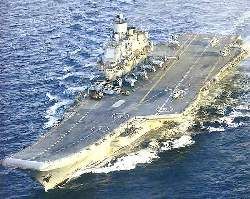Israel, U.S. Conduct Missile Test In Mediterranean
Israel and the United States tested a new air-defense system on Tuesday morning, launching a missile from deep in the Mediterranean Sea causing fear across Syria.
The first test of the latest version of the so-called Sparrow target missile had been successful, with the missile following its planned trajectory toward the Israeli coast and the Arrow radar system detecting and tracking its path, Israel’s MoD was quoted by The New York Times.
The Pentagon said in a statement that it had provided technical assistance and support to the Israelis for the Sparrow test launch. The statement said the test had nothing to do with American preparations for possible military action against Syria, according to the report.
“The test was long planned to help the Arrow Ballistic Missile Defense system’s ability to detect, track and communicate information about a simulated threat to Israel,” the statement added.
Arieh Herzog, the former head of Israel’s missile-defense program, said the test was “a routine part of what is done in the development of the defense systems.”
Commenting on the missile test, Moshe Yaalon, the defense minister of Israel, said on Army Radio that the preparedness by the Israel Defense Forces over the past week was “founded on many technological capabilities, which need to be tested by the defense establishment and the army, and indeed a successful test was held.” He also said: “Our systems need to be examined and we will continue to develop, share and provide the IDF with the best systems in the world.”
In Russia, the missile launch was first reported by the RIA Novosti state news agency, which announced early Tuesday afternoon that Russian radar had detected the launch of what it called two ballistic missiles in the Mediterranean Sea, giving no further clarification.
The reports from the Russian MoD said rockets had been launched more than two hours before the news broke and yet the missiles had not seemed to hit any target in the region. When the missiles were reported to have crashed in the Mediterranean Sea, the Interfax news service cited a source in the Russian Navy suggesting that the launch may have been a meteorological experiment.












